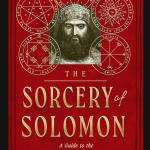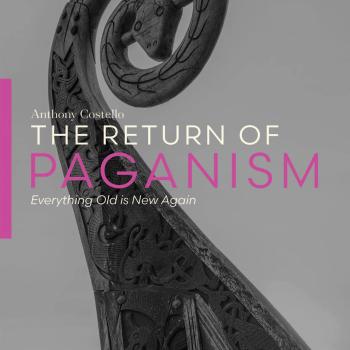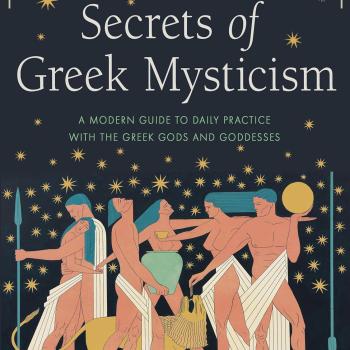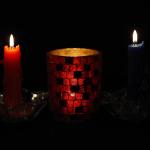Review of Searching for the Divine Spark: A Brief History of Gnosticism by Darren Lorente-Bull
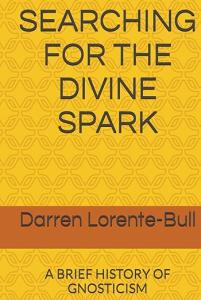
Searching for the Divine Spark: A Brief History of Gnosticism aims to distil the essence of Gnosticism by studying the religious and philosophical currents that influenced it, as well as to understand why its tenets are still relevant and thriving.
Its appeal lays in the fact that:
“Gnosticism offers us a path of knowledge based on intuition- what Greek philosophers referred to as the nous [the mind, the intellectual capacity] – and on the belief that this world is an illusion and that only consciousness is real. Gnosticism promises access to the Divine Consciousness or true God who stands at the very top of the spiritual hierarchy and we can achieve this directly through our own effort. The goal of Gnosticism is to attain a direct knowledge of God, although it is important to note that gnosis was not something merely rational but rather an intuitive and supernatural pursuit too.”
It is thought by many that Gnosticism is merely a Christian heresy, but while this was true in some cases, it wasn’t in others:
“But it is important to note that classical Gnosticism transcended religion: some Gnostics claimed to be Christians, others were Jews and in the case of the Manichaeans they created their own religion, probably one of the few only real Gnostic religions with global reach that ever existed. When orthodox Christianity and the official church were established in the West and part of the East, classical Gnosticism had practically disappeared and its religious heir, Manichaeism, would soon fall.”
Very early Christianity was very fluid and had yet to crystallize into orthodoxy:
“Gnostic teachers such as Basilides, Marcion and Valentinus were themselves self-proclaimed Christians until their ideas were refuted by orthodox heresiologists. It is important to note that even Christian theologians of the stature of Origen were also condemned by the established church. In its beginnings, Christianity had many similarities with the Greco-Latin mystery religions: purification and abstinence rituals, the initiation character, vigils, pilgrimages, fasting, etc. In addition to this, Christian art adapts the symbology of pagan art and even the religious vocabulary.”
There is a fascinating account of the discovery of the Nag Hammadi codices in Egypt in 1945 which completely revolutionized the study of Gnosticism. Before these codices were discovered, the sources used to study Gnosticism were limited to the a few tidbits left by Christian heresiologists who destroyed almost everything except for a few excerpts which they quoted to prove that their refutations were justified. The account covers a peripheral blood feud where the death of the father of the gentleman who discovered the codices was avenged. The gory details are normally omitted by other authors.
One of the Nag Hammadi codices Is reminiscent of the Greek Magical Papyri:
“The Coptic Gospel of the Egyptians, also called the Book of the Invisible Holy Spirit, includes an invocation using a form that could remind one of glossolalia, that is, a repetition of syllables without apparent meaning that seems a distant antecedent of the so-called barbaric names later used in grimoires and magical texts. These names look like meaningless, unintelligible words that are created through certain transcription errors, a phenomenon that must have been quite common in this period when texts were translated into various languages and dialects.”
This indicates that efforts to separate Gnosticism and other philosophical movements such as Hermeticism from the practice of magick are an artificial construct imposed by some contemporary academics.
Mary Magdalene was a controversial figure in early Christianity:
“According to the tradition of Byzantine Christianity, Mary Magdalene was a high-ranking woman who had been exorcised by Jesus and who had witnessed his resurrection. The other tradition most associated with Western Christianity is that Mary was a repentant prostitute who had decided to follow Jesus as one of her disciples.”
A lot of information is presented allowing readers to make up their own minds as to which version rings true.
There is information on the controversial Gospel of Judas which was probably written between the 2nd and 3rd centuries. It was translated by Marvin Meyer who presents Judas as “a model disciple who knew how to carry out the wishes of his teacher and was the only disciple who really understood Jesus’ message.”
The text ends with a detailed survey of movements throughout history inspired by Gnosticism, showing that the Church was never able to fully destroy these allegedly heretical schools despite their most brutal efforts.
All in all, Searching for the Divine Spark is a wonderful introduction to Gnosticism. So long as there are serious seekers of the truth, Gnosticism will never die.
Tony Mierzwicki
Author of Hellenismos: Practicing Greek Polytheism Today and Graeco-Egyptian Magick: Everyday Empowerment.



